Safety in Iceland
"Be safe," are the first words we hear from our loved ones when leaving on another adventurous trip somewhere on the world map. When it comes to Iceland, everyone knows deep inside that the words "be safe" are even more important. Weather in Iceland can change from beautiful sunshine to a massive storm in just a few minutes, and if you are not used to it, it is better to always be prepared.
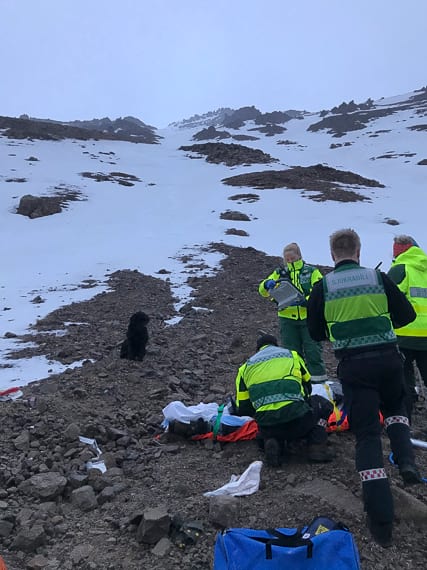
Akureyri Firefighters & EMT at work
For more on the subject of safety in Iceland, we bring you an interview with Eydís Sigurgeirsdóttir, a young woman who works with Slökkvilið Akureyrar (Akureyri Firefighters), which also carries the role of a rescue worker. She shares what is important to know when traveling in Iceland and what stories she has experienced while doing her dream job.
S: Hello Eydís, can you tell us a bit about yourself?
E: Hi! My name is Eydís, and I am a 23-year-old from the countryside of Akureyri in Northern Iceland. I'm a sports person and love outdoor activities. I've tried most sports, but today I do Crossfit, and recently started doing Brazilian jiu-jitsu. In the summertime, I enjoy mountain biking, hiking, and occasionally rock climbing. In the winter, I snowboard but recently bought mountain skies, and I'm excited to try them! I also love my job! I'm an EMT and a firefighter and work at the fire station in Akureyri. I have been in the field for nearly two years now.
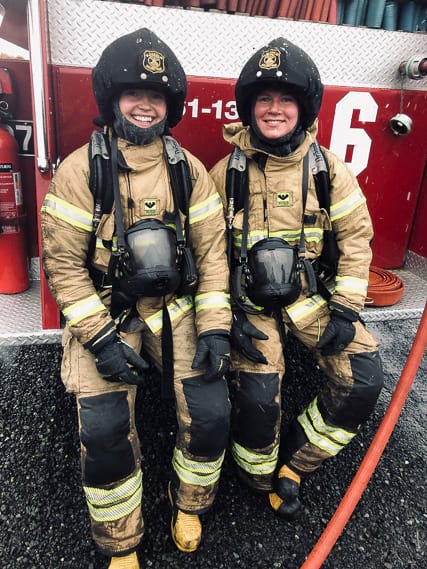
Eydís (on the left) with her colleague Jofríður
S: Woah, you probably don’t sit too much, haha. Why did you decide to be a firefighter and EMT in the first place?
E: In the summer of 2017 and the following winter, I was working on the police force and wanted to take the basic EMT course to be better prepared for serious accidents as a police officer. While taking the course, I realized that this field of work probably suited me better, so in the spring of 2018, I applied for a position as a firefighter and EMT at the fire station in Akureyri.
S: What is the most challenging thing about your job?
E: My field of work is, of course, challenging at times but also really rewarding when you can help people in need, and that's why I love my job. It can be hard seeing severely injured patients, especially afterward, when you have time to think about it. At the scene, we are only thinking about providing the patient with the best possible treatment. I also often find it challenging to see or confront the family members of a critical patient that we are taking care of. I can't imagine being in their situation where they see their loved ones in terrible shape.

S: Why is the fire station and emergency department in one place in Iceland?
E: In Iceland, like in many other countries, the prehospital service is linked with the fire service to better use the human resources that fire stations have. So all the firefighters at the bigger fire stations here in Iceland are also EMTs or paramedics.
S: What would you, as an EMT and firefighter in Iceland, recommend to people coming to visit Iceland?
E: First and foremost, I would say people always need to be prepared for the unpredictable weather here, especially during the winter months. For example, while we are doing this interview, there's crazy blizzard weather outside, and 99% of the roads in Iceland are closed. People should check forecasts at regular intervals if they are traveling. Icelandic roads are narrow and dangerous at parts, so you have to be careful when passing cars. And, of course, respect the maximum speed, which is 90km/h in Iceland.
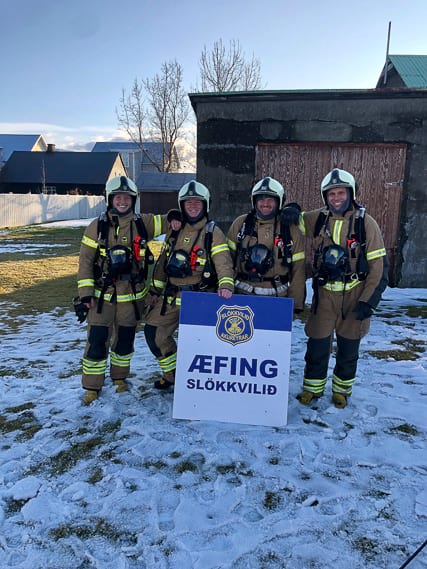
Slökkvilið Akureyrar (Akureyri Firefighters)
S: What things do you recommend to always have packed with us?
E: Definitely a phone! And be sure it’s charged. Warm and water-resistant clothes and good shoes. Water and a small first aid kit. I also recommend checking out the safety website www.safetravel.is before traveling in Iceland. It has a lot of useful information about safety when visiting here. If you are going alone, always tell someone where you are going, and how long you expect to be there.
S: What should someone do if they get into a dangerous situation?
E: Stay calm. Call (+354) 112. If you see someone else in trouble, get them or guide them out of the dangerous situation if it does not put you in danger. Always think of your safety first before helping others. You can't help anyone if you are injured or in a dangerous situation.
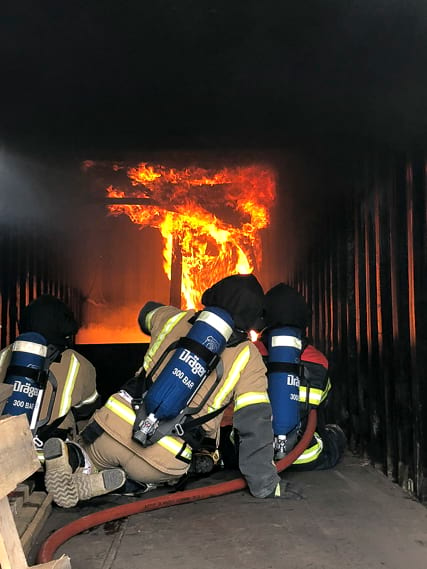
Neverending training
S: Are you often meeting situations, where people don’t follow the rules?
E: Sadly, it's really common that tourists don't respect road signs, especially signs that indicate that roads are closed. There is a good reason if they are closed. But often tourists drive past those signs and get in difficult or dangerous situations and need help from us, the police or search and rescue teams. And that's an awkward situation to be in for tourists.
S: Can you share any story with us?
E: I have been working for less than two years as an EMT, but I can think of a lot of stories. Good and bad ones. A year ago, around the new year, we got a call that I will remember for a long time. Two local women were hiking up a mountain, and both fell a long way down the mountain and were injured, one of them very severely.
We were four EMTs from the shift who hiked up with bags and other equipment. Two police officers hiked with us, and a little later, a search and rescue team was with us there as well.
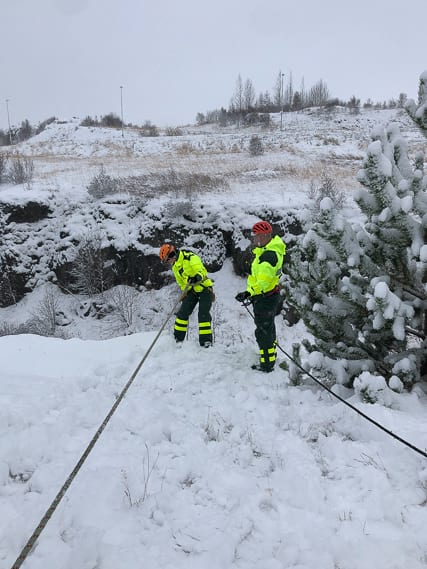
It took a while to hike up, but then our job was to do everything we could for the women, that includes keeping them warm, monitor them, give medications, etc. Then wait for the helicopter and monitor the patient. The weather was not bad when we started hiking, right below 0 ℃ and not much wind. But shortly after we came up, the weather quickly got worse with more wind and it started snowing. It was freezing, and I still remember how cold I was. I didn't have a hat or gloves, but one guy from search and rescue gave me mittens and buff for a while, and I feel like that saved me, haha.
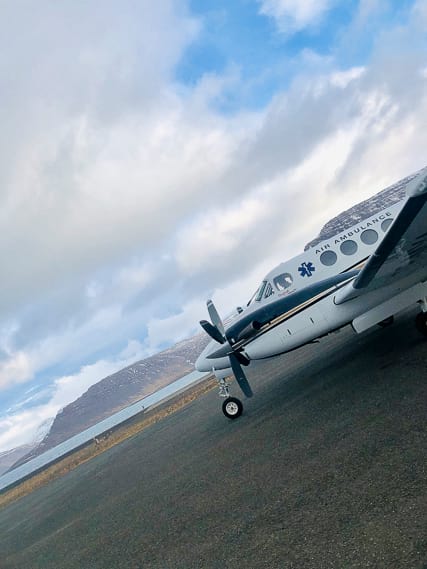
Air Ambulance in Iceland
A while later (felt like forever), the coast guard helicopter came and hoisted up the more injured patient, but the search and rescue team had to carry the other one down. They rigged lines from the scene, 800m high and down the mountain where we drove the patient to the hospital in an ambulance. When we got the call and started driving to the site (took about 15-20 minutes), we thought it was only one patient and a short distance from the road. But shortly after we started hiking, we got information about it being two patients and further up the mountain.
S: Thank you Eydís for your time. Anything you’d like to close with?
E: Thank you too! Maybe just that people should be really careful and follow the rules. One of the reasons why I love my job is that even I don’t know where my day is going to take me or what missions I will get.